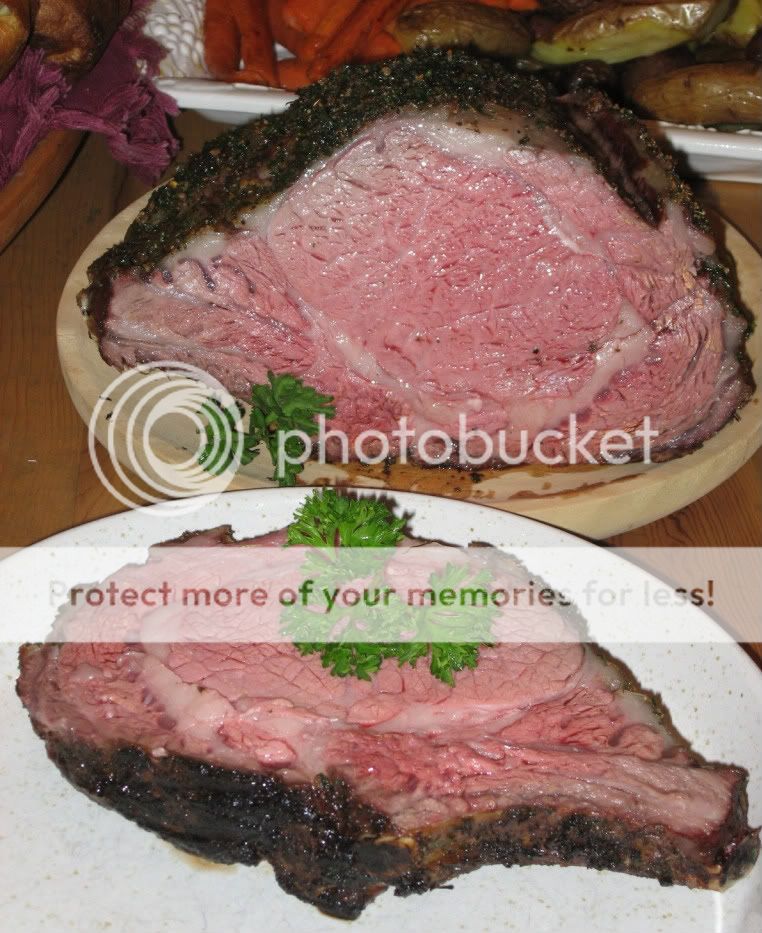Just wanted to post this pic to compare with Ron's. This was a reverse sear done at 225* (for about 4 hours), bone side down, done to an internal temp of 124* (virtually the same temp as Ron's). I then let it rest, tented under foil for 20 minutes while I brought the temp up to about 600* and seared it for just a couple minutes per side.

First I wanted to mention that there was an article posted last year that I didn't bookmark that discussed the reverse searing technique and I believe their analysis involved weighing roasts during the cook as a measure of juices retained. According to that article (as I remember it) searing beforehand or not searing at all resulted in more loss of juice than searing afterward. In any case, I don't think it is too critical one way or the other. In my opinion it is much more critical to let your roast rest sufficiently before cutting into it! Perhaps someone remembers this article and can repost it, as there will be lots of questions about cooking prime rib in the next couple weeks.
What I wanted to point out was the differences between the two cooks. The quick, hot sear resulted in a crust on mine, but when cut, note that the doneness does not penetrate. That is a result of the other difference, the temperature. Ron cooked his roast at 275*. Note the coloration in his. The brown on the edges extends farther inward. At 225*, the pinkness is more uniform out to the edge. I am not saying one is better than the other. I actually like very much the outer edge being cooked more than the inside. The techniques do give different results though and what you decide should depend on your personal preference.
Essentially:
1. Searing at high heat and quickly affects primarily the crust.
2. Lower heat makes a more uniformly cooked roast.
I hope this helps clarify a few things.





